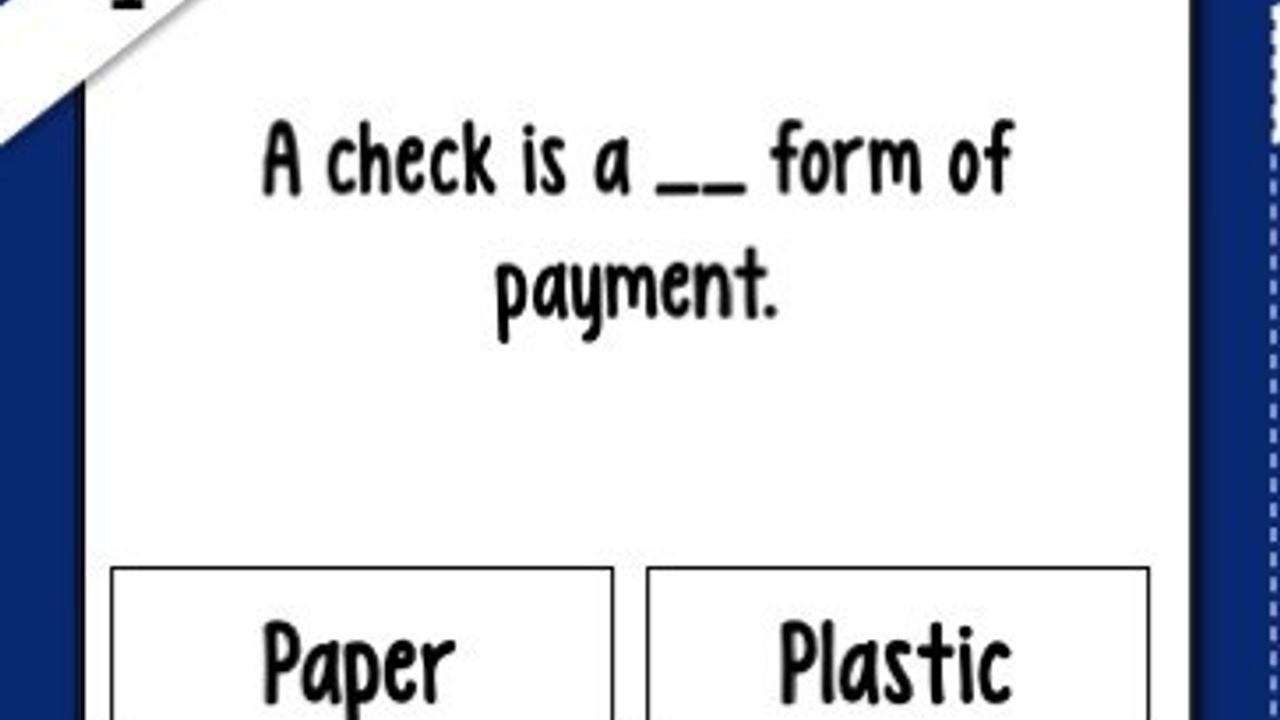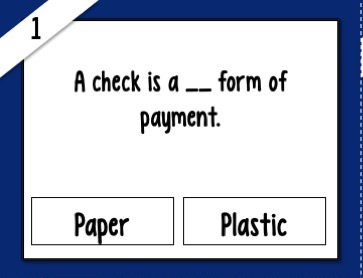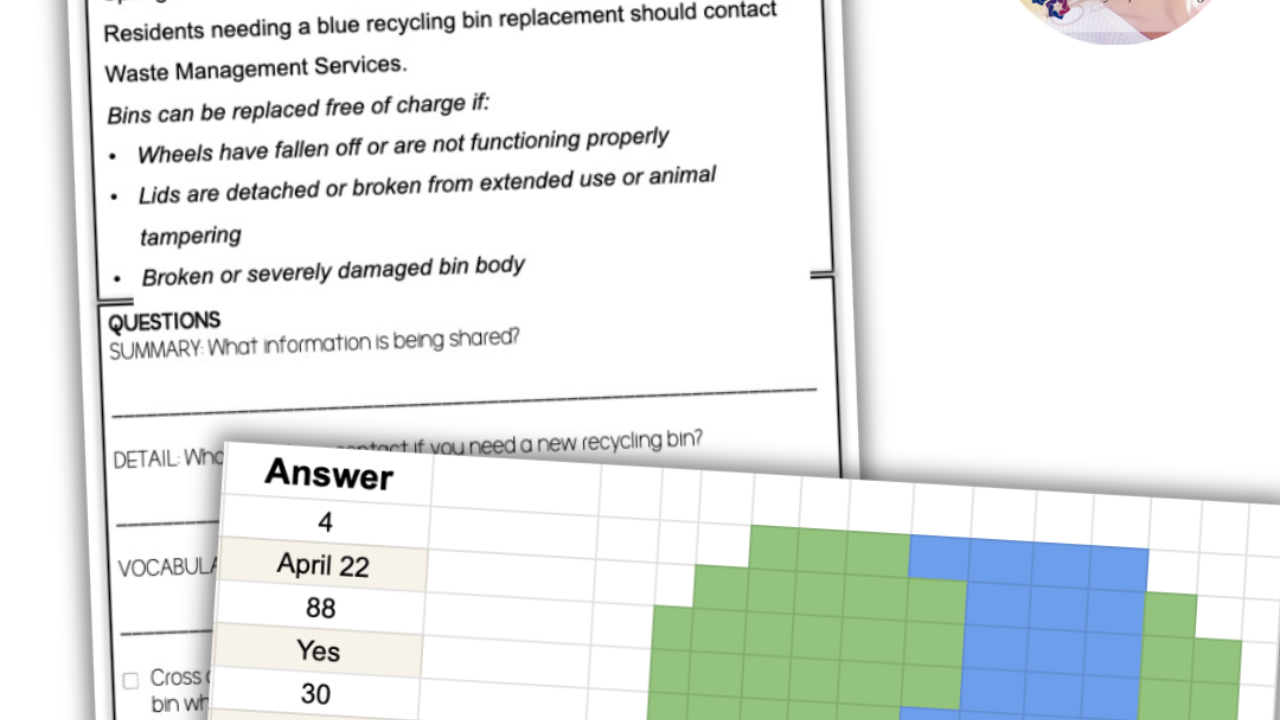How to Teach Checking Accounts
Sep 05, 2020
Our third topic of the Consumer Math Blog Series is about how to teach about checking accounts. Read more about why and how you can teach about checking accounts using my Checking Account Lesson Unit (click here to get your copy).
Purpose of Teaching About Checking Accounts
Checking accounts are a basic need of adulthood and helping students to realize their functions will solidify why they are so important to have. While their purpose may be to keep money safe and secure when paying others, they also have a way of keeping funds both organized and visual for students.
Key-Must-Teach Concepts
Checking accounts only keep the money you already have. A checking account will not let you spend more money than you have (if it is set-up with those restrictions).
Check writing is still a skill. While people may write less checks than they once did, it is an important skill in helping students see how debit cards and basic payments work.
Lesson Objective
Given a specific purchase amount, write a check and record the purchase in
the check register.
Checking Account Lesson Unit
Lesson Unit Break Down
Day 1- This day is for laying the groundwork of information basics of checking accounts. Use this very important day to be clear about what a checking account is. There is a fun brain teaser to get the day going, followed by a reference to a visual for students who need to see how these concepts relate to one another. Then, use the reading passage, True/False questions, and 4 writing prompts to round out the class period.
Day 2- IF you take the Task Card suggestion below, then I could combine the Tuesday/Wednesday outline that is found in the Lesson Unit into one day. I would cover the Notes and the Parts worksheet into the same day. Not only will this drive home the top concepts, but it will also give students the foundation to be ready for the Task Card review the next day.
Day 3- As I will mention in the Task Card suggestion below, use the first part of this day’s class period to review the basics of checking accounts. After that review, then cover the Checking Account- Application worksheet. This reviews how to both write the check and enter it into the check register and re-balance the account.
Day 4- Can you write me a check? Is the next activity. Students will practice taking given information and writing a check to make a payment. IF there is time, you can also do the around the room Check Errors activity, where students look at a series of checks and try to find the errors. (If not, save that until Day 5).
Day 5- Go ahead and complete the Check Errors activity (if you need to) OR do another Task Card review (this won’t hurt, I promise) before the assessment. Follow up with the assessment, word search, and functional math review. Students can never have enough functional math review!
Reading Passage Options
The three pages of Reading Passage material (1 page explanation, 5 T/F questions, and the 4 writing prompts) are key for completing the first day of the lesson. Again, there are so many basics of a checking account that are critical to understanding before moving forward. I would suggest having the class read the Reading Passage twice (maybe alone and then in partners) and highlighting one key sentence from each section, completing the T/F independently, and then cutting up the writing prompts and placing them around the room for students to grab one at a time. This will get them up and moving a bit between writing (they can staple them together at your desk once they finish all 4).
Checking Account Lesson Unit
Listen and Learn
A Listen & Learn is a short, 5 sentence PowerPoint/Google presentation that introduces the topic using visuals and audio. Ideal for non-readers! Read about what they are and how they might be right for your classroom here.
Task Card Ideas
While I traditionally like to use the task cards on the last day of a lesson (which for me is Friday), I would offer to use these mid lesson. Since there are a lot of vocabulary words and ideas about checking accounts that may be newer to students you COULD use these after the Parts worksheet and before the Guided Practice. Anyway you want to use them would be great (here are 10 ideas for how to use them), but it may helpful to reiterate the concepts one more time before starting the practice.
Further Practice Ideas
If you want your students to know what local banks are out there and what types of checking accounts they offer, then reach out to them! Perhaps you email each local branch manager a list of a few questions and request that they send the information back and you share it to your class. If you have the ability to have them attend virtually, via Skype or Zoom, then offer to have a bank representative answer those questions to the class virtually. Helping students to make the connection between topics learned in the classroom with where they are out in their community strengthens the base of understanding and ‘importance’ in their eyes.
Ultimate Goal of the Lesson Unit
The goal for students is to walk away from this lesson wanting to open their own checking account to help keep their money remain safe and organized. As with many of our students, executive functioning is difficult (write the check, give the check to the person they owe, write it down in the check register, and then recalculate the balance), this can be a challenge. Streamlining this through a checking account that offers online baking and a debit card (and a bank with an app gets extra points) can be a life saver for many students.
Checking Account Lesson Unit
May I Also Suggest Teaching
You can’t have a checking account unless you have money, which is best earned from working a job! Also, that hard earned money should be both spent and saved! Therefore, I would recommend the Income lesson unit and Savings Account lesson unit. While you are there, grab the Budget lesson unit to round out the concepts!


















